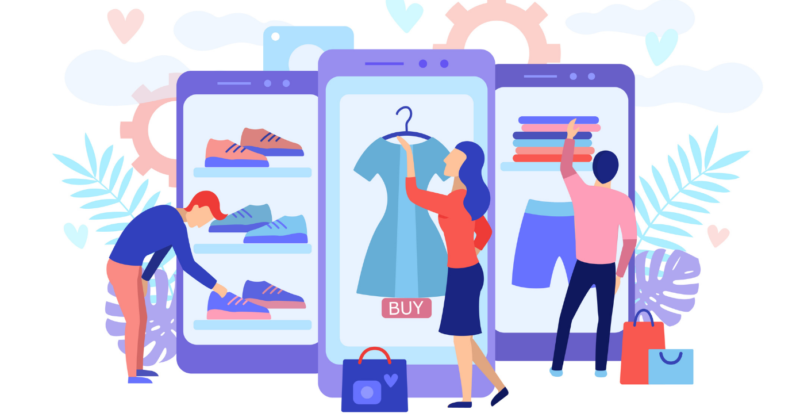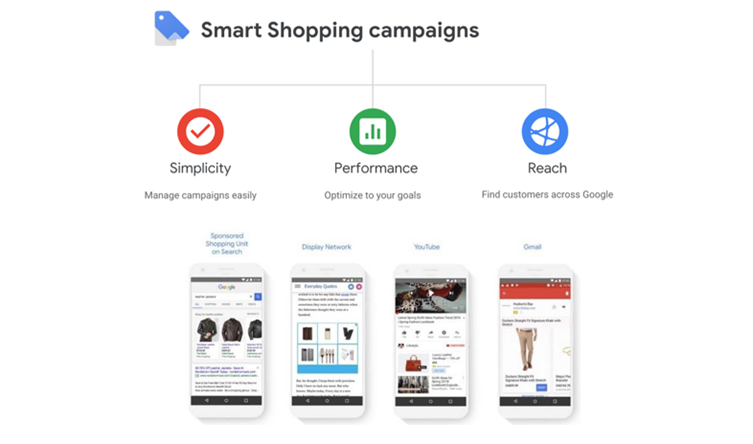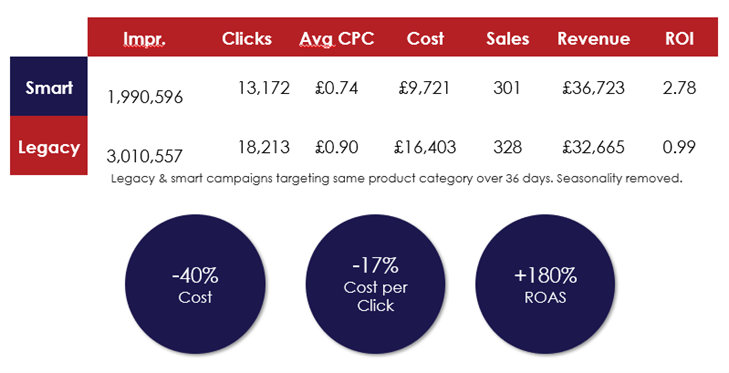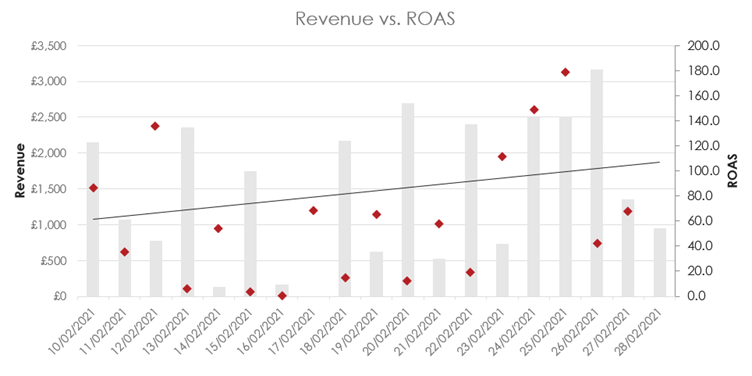Expert Q&A – Are Smart Shopping Campaigns The Answer To Your Paid Search Woes?


We recently had a Q&A session with Malcolm Gibb, Head of Paid Media at QueryClick, on the pros and cons of Smart Shopping campaigns – including when to use them and when not to.
Malcolm leads our Paid media team and has over 11 years of experience managing complex and challenging Paid Media strategies across ecommerce, retail, B2B and many other sectors.
What are Smart Shopping campaigns – and how do they work?
Smart Shopping campaigns are actually not that new, they’ve been around for a while now and I’m sure some of you have tried them out in your marketing campaign mix.
Essentially, they are campaigns that combine traditional Shopping ad inventory with automation, and increased reach and inventory. They open up ad inventory across the display network, local inventory ads, YouTube and Gmail – allowing you to scale shopping campaigns beyond the SERPS.

Completely automated, Smart Shopping campaigns take the product inventory you select and serve against Machine Learning bidding algorithms designed to maximise conversion value. They are easy to setup and even easier to manage,
When should you use Smart Shopping campaigns?
Smart Shopping fits really well in the following instances:
- for high value or high-volume products in a particular product category as opposed to campaigns across a wide product inventory. This gives the algorithm and the Machine Learning enough data to push performance and learn
- where you are able to understand the price point of your products in the market, in search results and understand where you are the most price-competitive
- where you can focus on popular, or traditionally in-demand products
However, wherever you do deploy it, you need an element of “runway” to allow the bidding strategy the time it needs to actually learn properly.
What results can you expect from Smart Shopping campaigns?
Rather that discuss possible results, let’s take a look at two examples from work we’ve done with clients to demonstrate the real benefits of adopting Smart Shopping.
Case Study 1
We worked with a luxury retailer to make an 180% ROI improvement through Smart Shopping. We had a bunch of legacy campaigns, set up in a very traditional and manual way – detailed bid management, device adjustments, mobile and locational targeting etc. And, as a result, they took a lot of management.
But they were also split out across a range of categories – across trousers, accessories, scarfs, etc. So, it was possible to quickly pause the legacy campaigns and transfer all of the spend into Smart Shopping campaigns. Broken down into individual campaigns by category. And the results below are impressive.

Despite the fact that we weren’t able to match the same level of sales volume, we were able to spend significantly less and generate much more revenue. That was what generated more than 180% ROAS in comparison with the previous campaigns.
Case Study 2
In this instance, we worked with an outdoor retailer and had inherited a really complex and poorly constructed paid search shopping structure.
We simplified that down by setting up a Smart Shopping campaign for one of the categories that they really wanted to push: bikes. They were already promoting bikes through their original campaigns, however it was almost generating a negative ROAS for them.

By shifting this one specific category to a Smart Shopping campaign we were able to deliver 1000% ROAS from that one campaign alone.
Are there instances where you shouldn’t use Smart Shopping?
There are a few specific instances as follows:
- When you are promoting products in niche categories where there is a low level of volume, as it can be difficult to maintain traction
- Where you want to prioritize products with different values. For example, a bike retailer is likely to benefit from promoting high value, high volume products like the bikes themselves in a Smart Shopping campaign. But for lower value bike accessories it will pay dividends to create a more manual and traditional paid campaign that provides the ability to control who sees it with audience-based adjustments etc.
- If you are targeting on generic terms – if you’re just looking for searches like “bike saddle”, then you want to be exposed on that. That’s not always going to happen on Smart Shopping because it is optimizing towards the behaviour of the user at that particular point in time
- Intent based shopping – this is usually built by priority. So, we would typically split that by audience segments – a traditional shopping structure. And then that Smart Shopping almost plugs on the top. So we’re able to pick up a particular category and throw that into Smart Shopping and it tends to work really well.
Are there some Smart Shopping best practices you can share?
There are 3 key things I would bear in mind as you develop your Smart Shopping campaigns:
- Use good display assets – the good thing about Smart Shopping is that you can deploy HTML5 creative – which is an opportunity to have a full remarketing focus within one campaign
- Set objectives – the only bid strategy that Smart Shopping works on is something called maximize conversion value which is designed to make sure that it’s trying to serve high value users. This allows us to set a target return on ad spend which is important because the target ROAS is effectively the only lever that controls exposure. So, if that’s set too high you’re going to get very limited exposure; if it’s set too low. But, conversely, if its set too low it’s not going to make an adequate return
- And be patient! Any Machine Learning approach takes a lot of time to power up and get going. So, things are slow and you need to adjust. Try refining that target ROAS. Try refining the product categories. And be aware there are categories that will work on Smart Shopping and some that don’t
We hope this gives you the context you need to be able to consider Smart Shopping as part of your Paid strategy.
Own your marketing data & simplify your tech stack.
Have you read?
Generative AI is transforming the way that marketers plan and assemble content for their Paid Ads. As big platforms like Google, Meta and TikTok increasingly build the tools needed to...
In a surprising move that has sparked heated debate, Mark Zuckerberg announced on his Instagram that Meta will be reducing its levels of censorship and in particular fact-checking on its...
It is no understatement to say that the impact of AI in marketing is huge right now. Here we take a look at some of the top uses cases that...




